Uninterrupted data collection
Role: UX Designer
Team: Software Architect, Design Lead, Information Developer, UI Designer,
Front-End Developer.
Tools: Pen and paper, Sketch, InDesign, Enterprise Design Thinking Toolkit,
Carbon Design System
Duration: 2 months
Platform: Web (Enterprise SAAS) - Storage Insights
Data Collectors in Storage Insights
Data Collectors, in a nutshell, gather information from the customers' data centers for monitoring purposes, and prevent data from flowing in from external sources. This was one of my first projects after joining IBM, so there was a lot to learn, both in terms of the product and working with a larger team.
Understanding the problem
Before this project, the users did not have an easy way to upgrade, remove, rename a data collector, or assign to storage systems. They ran the risk of encountering interruption on their data collection; that could mean being unable to continuously monitor their environment. Interrupted monitoring is something that must be prevented when possible.
The constraints we had to work with were mostly UI centered. The product was not using Carbon Design System, so we had to use components from two different design systems. The Data Collector page was mostly static, and it had not been updated in many years. The screenshot below shows the page before we worked on this project.
Data Collector page before this project
Focusing on users' needs
The Software Architect and Design Lead created a design brief, and it outlined information that they had gathered and synthesized from users through interviews and from customers reaching out directly with issues around data collectors. The design brief was a helpful source of information that I regularly referred back to. We moved forward with the following four user needs.
1. A Storage Admin needs a way to maintain their data collectors up to date so that their environment does not experience any data collection disruptions.
2. A Storage Admin needs a way to remove a data collector from Storage Insights so that their environment is up to date.
3. A Storage Admin needs a way to rename their data collectors, so that they become more meaningful and specific to their environment.
4. A Storage Admin needs a way to assign data collectors to specific storage systems, so that they can better organize different workloads.
Ideating, iterating, and collaborating
Most of the ideation was done with pen and paper, and I continuously shared the sketches with the design team for feedback. One if the most helpful artifacts, to ensure all stakeholders were on the same page, was a simple flow map that displayed the new actions and capabilities that we worked on for the data collector page.
After ensuring that I had the feedback form various stakeholders on requirements and feasibility, I moved on to mid-fidelity designs and to collaborating closely with the UI Designer. It allowed us both to learn more about data collectors and to constantly bounce ideas off each other.
A simple flow map showing the new actions and capabilities
Writing the test script and gathering user feedback
The Storage Insights team runs a Beta program and many of our users are participants. For this project, I had the opportunity to write the test script including all of the tasks, about eight, that we needed feedback on. It was reviewed and approved by the Software Architect and colleagues running the Beta program. After receiving the feedback, it was deemed no major changes were needed.
Automatic updates
The need to see data at a glance is something Storage Admins always mention. This design shows the data collectors in their environments and relevant data to monitor their connectivity. The user is given the option to opt-out of automatic updates, but is informed why it is helpful, and how their environment might be impacted if it isn't up to date.
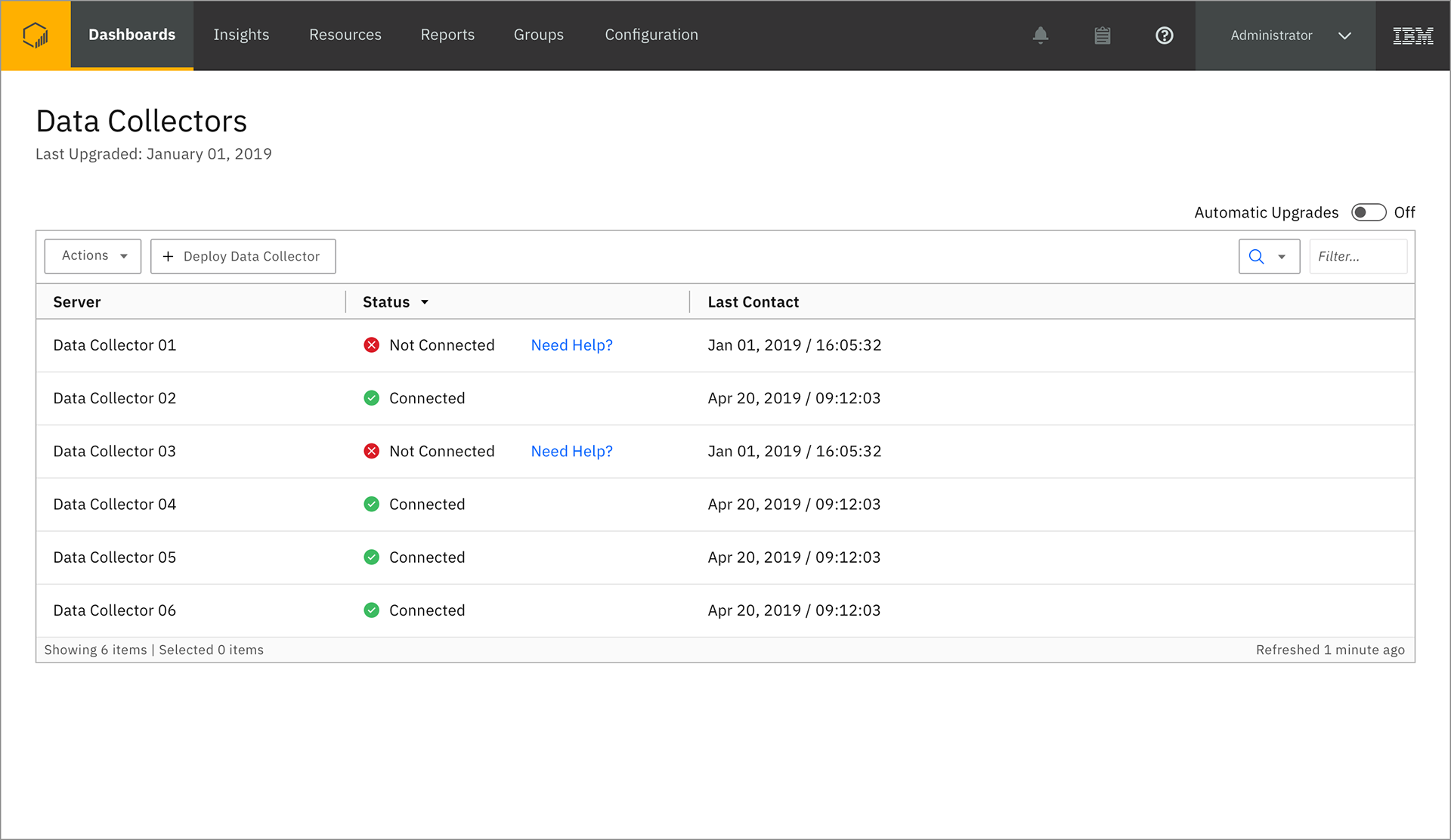
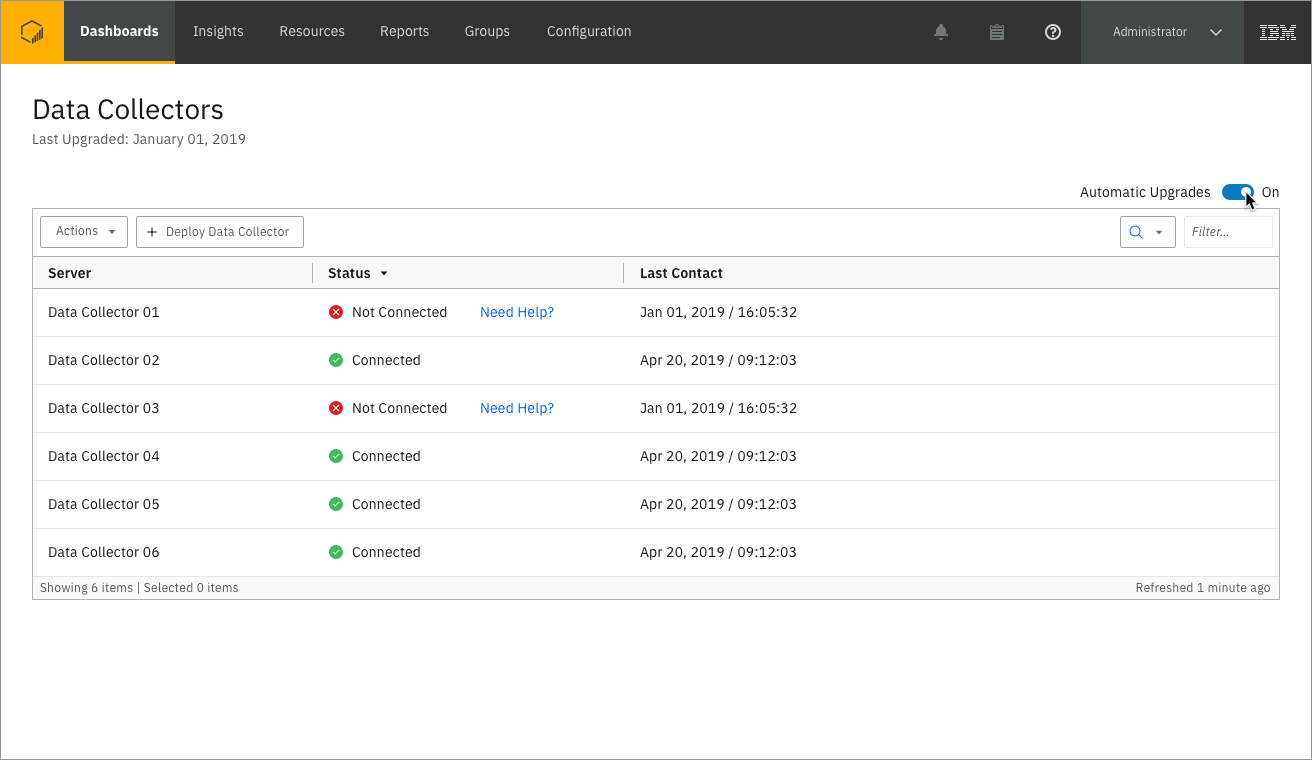
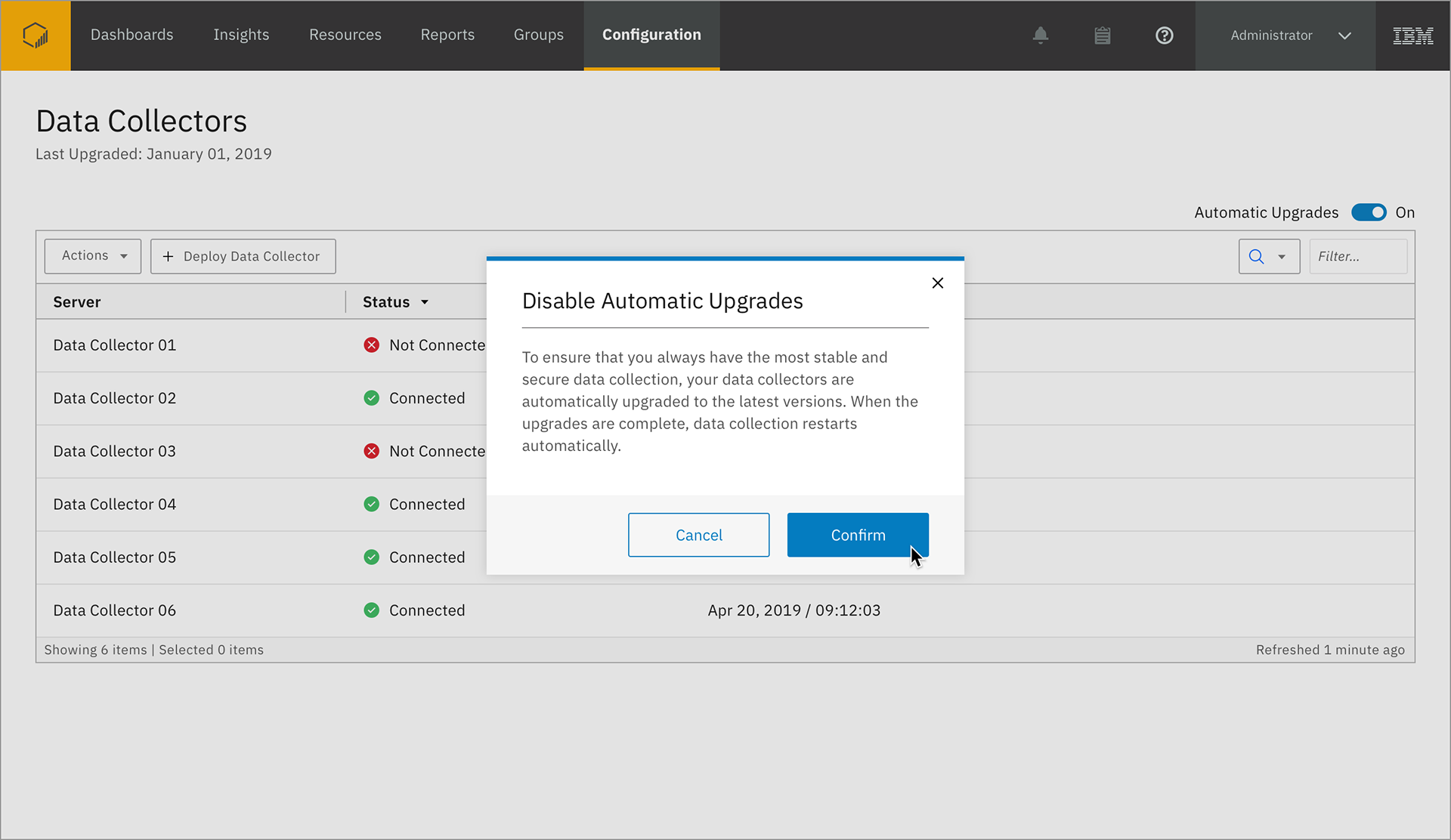
Removing and renaming a data collector
Two easy ways to remove a data collector for those with the proper credentials. Renaming their data collectors allows them to have more meaningful names that actually mean something in their environment. Renaming became incredibly useful when assigning data collectors to storage systems based on location, workload, etc.
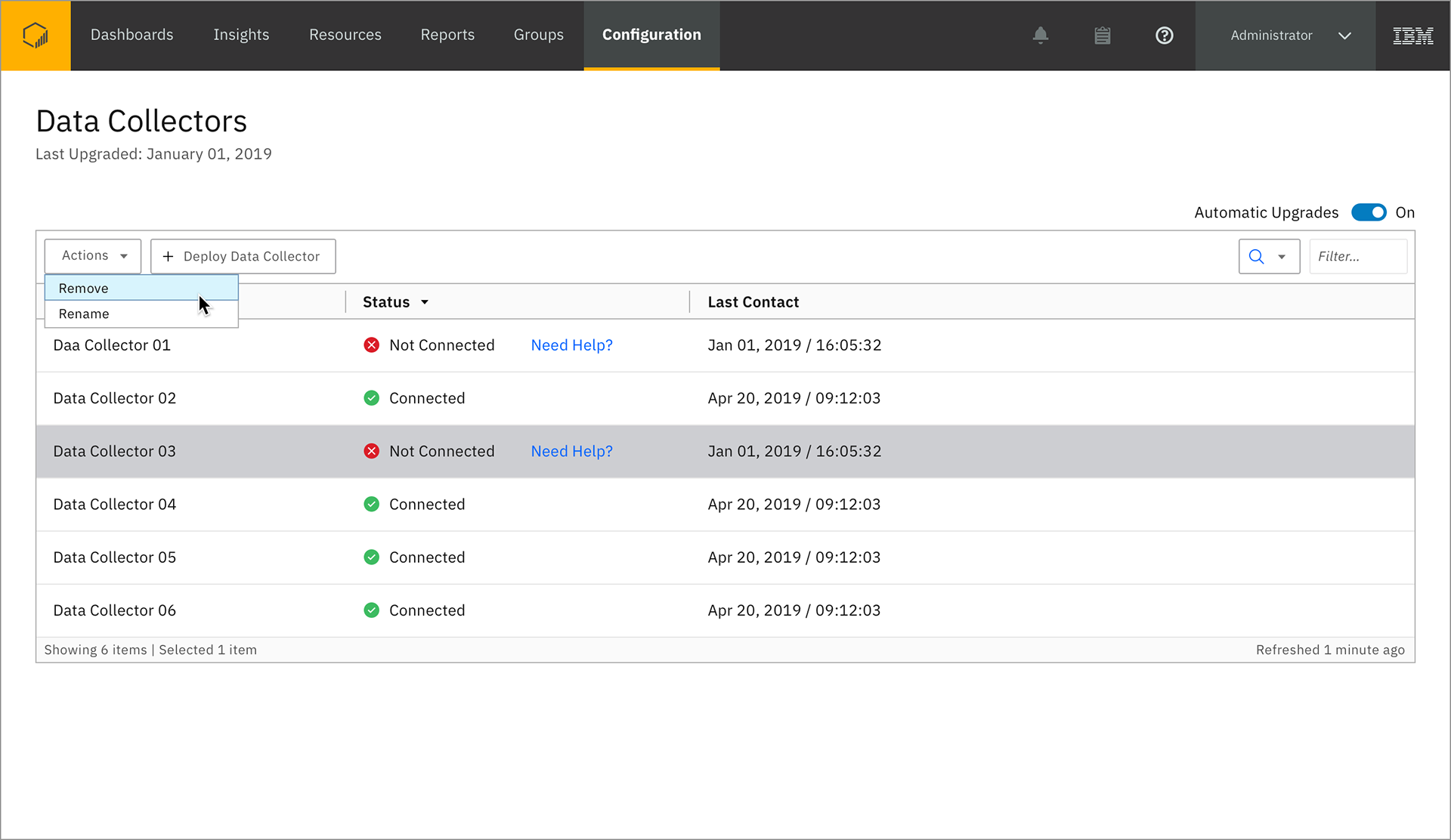
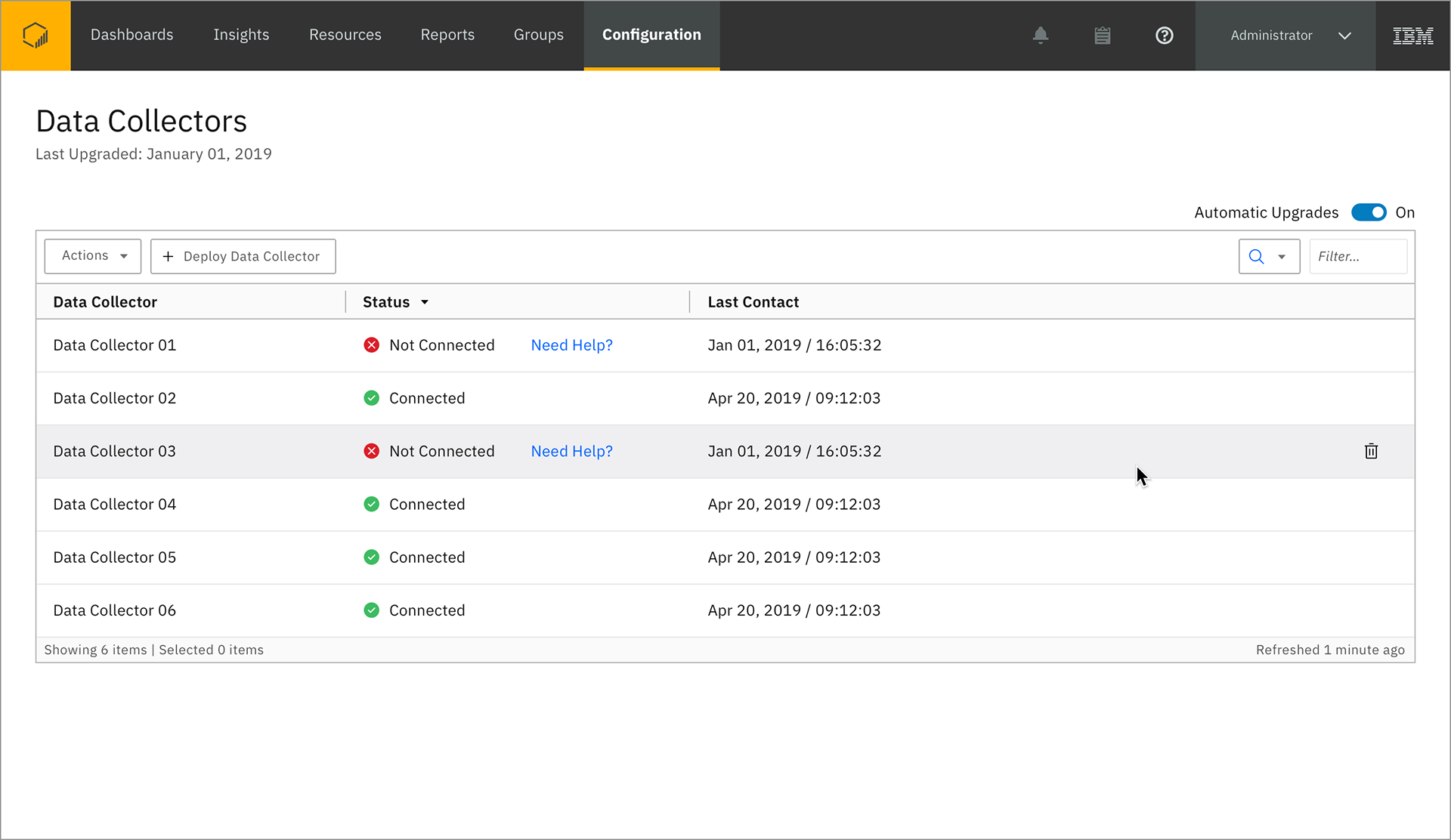
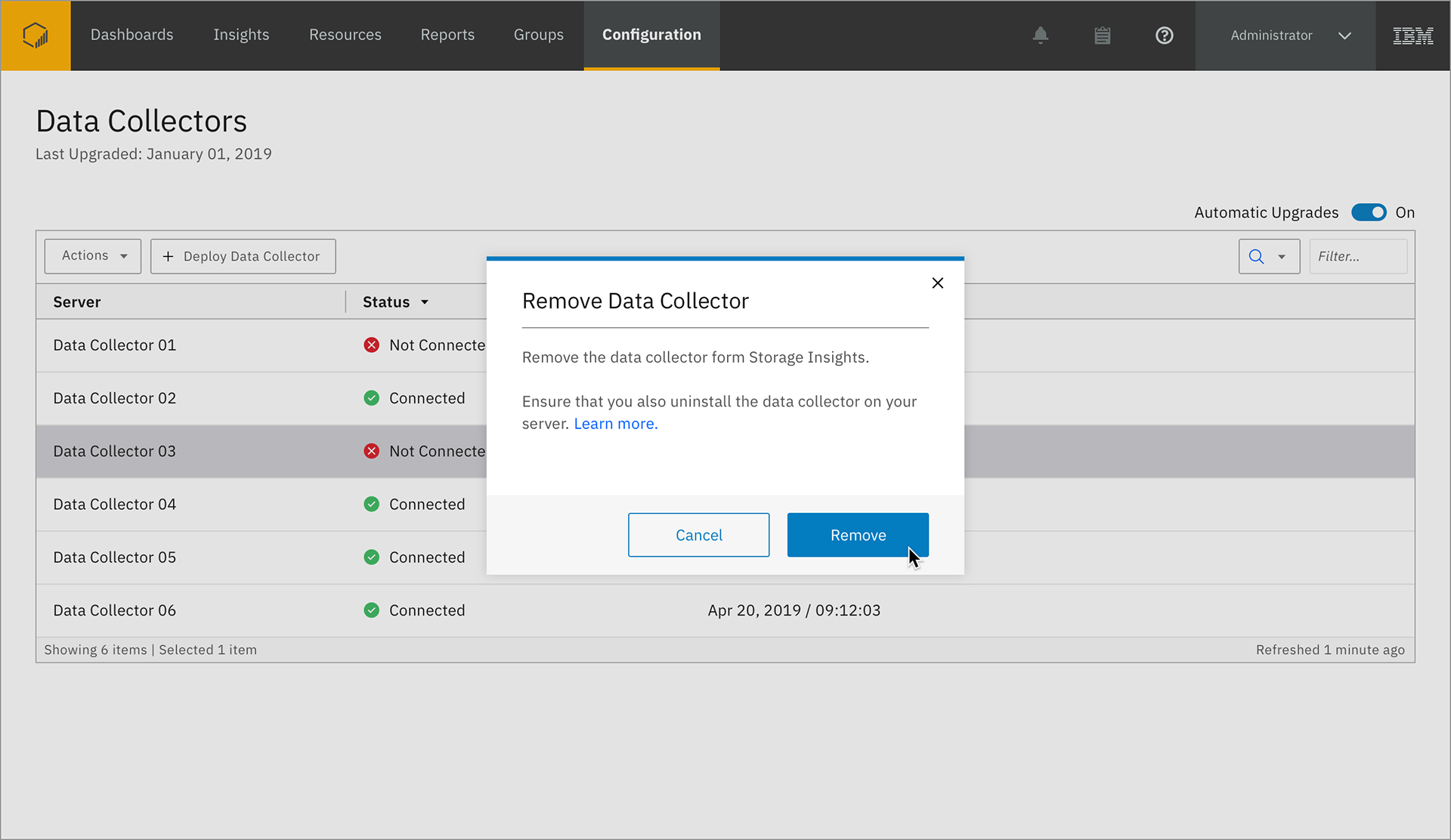
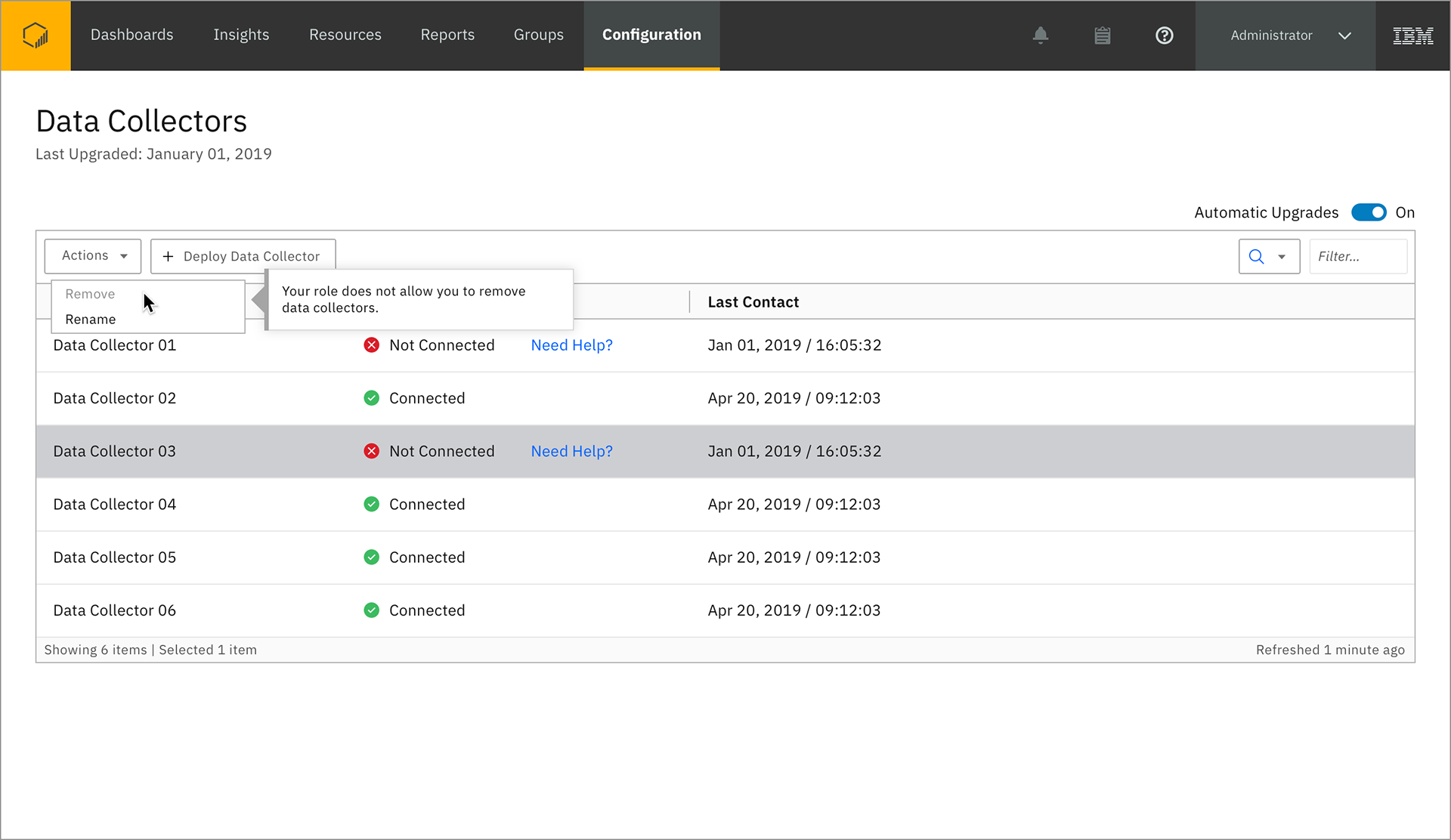
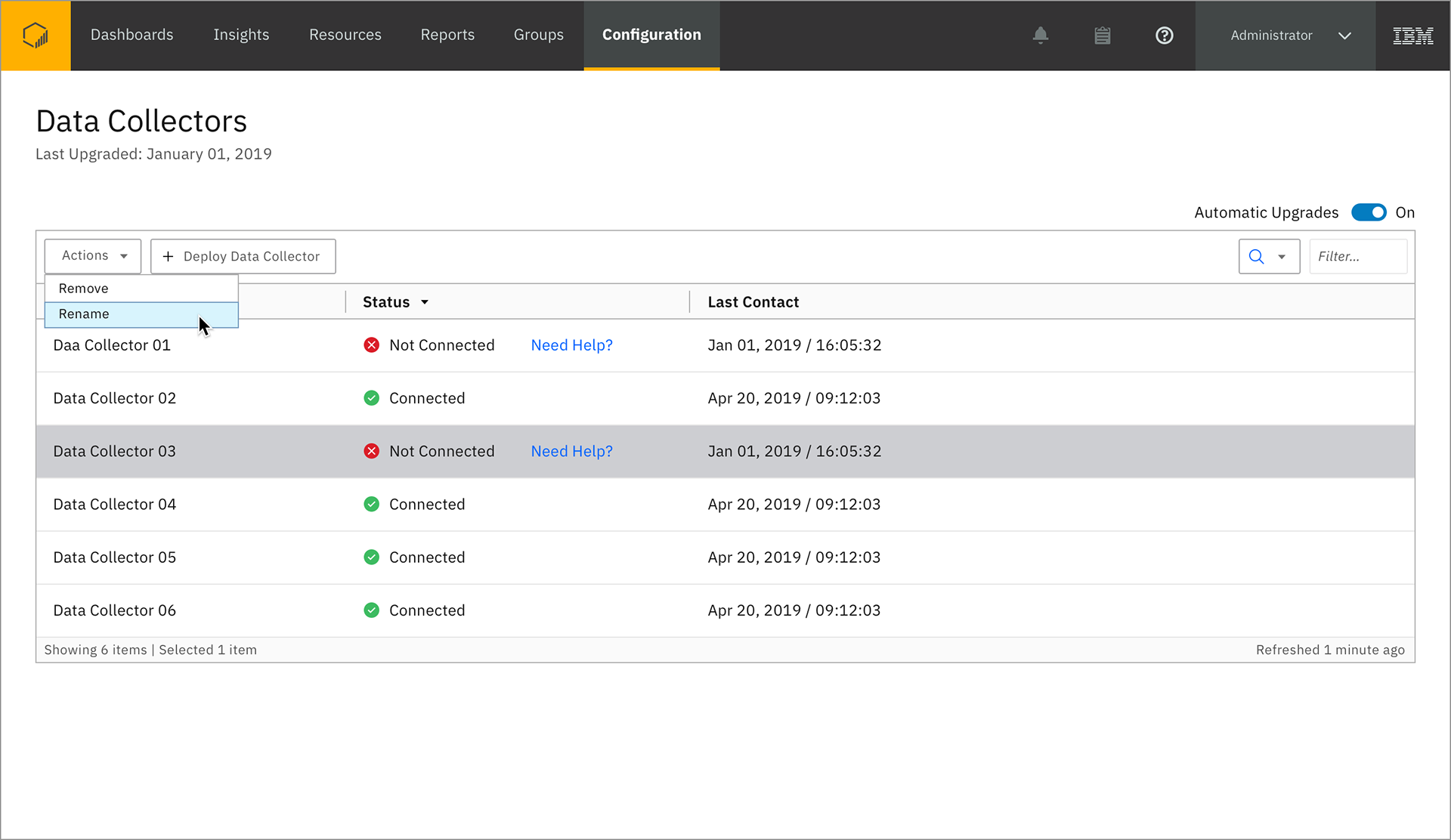
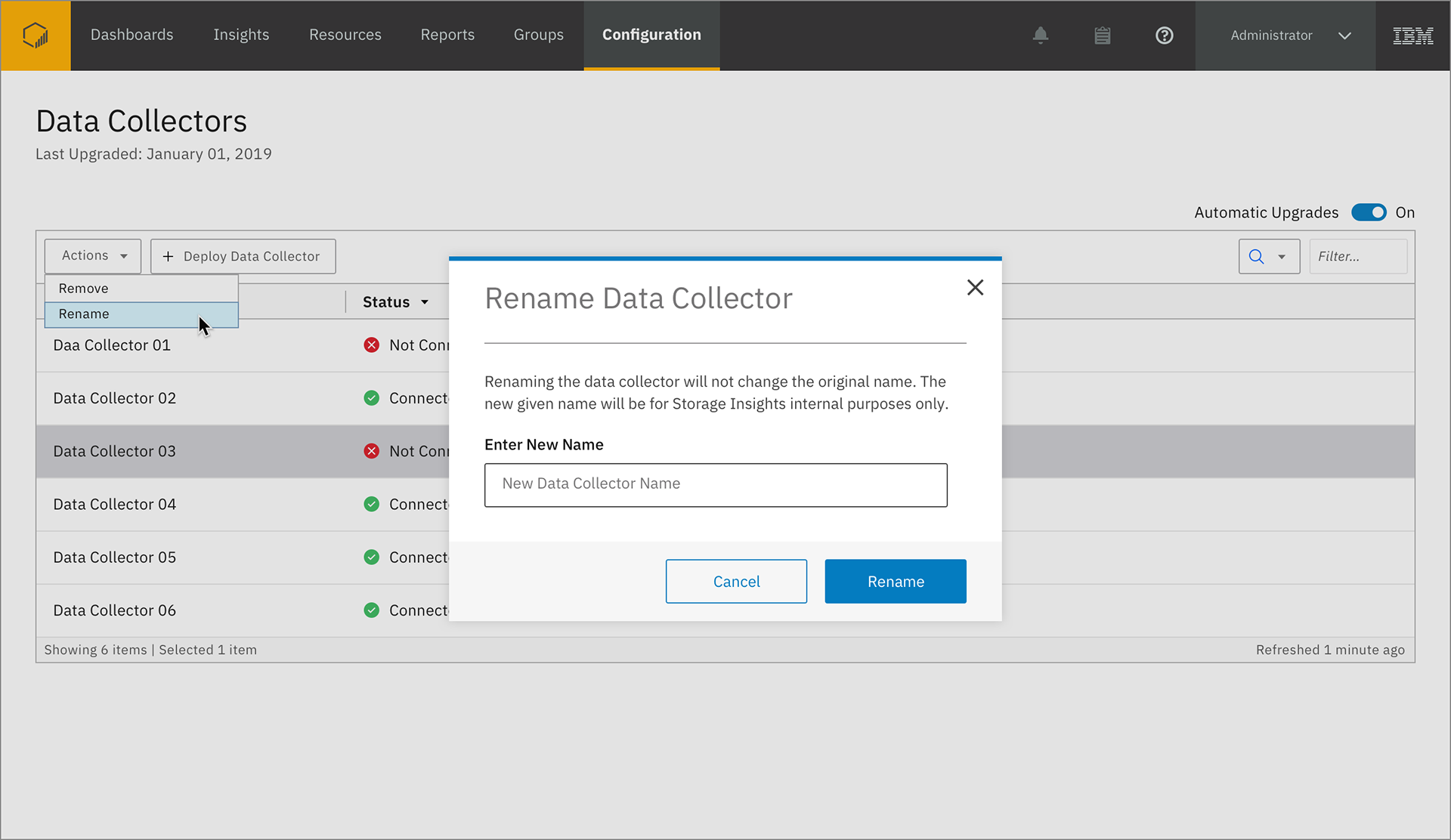
Data collector assignments
Assigning data collectors provided the users with the ability to balance their environments. We had to pivot a couple of times due to new requirements and feedback from Back-End Developers, but the UI Designer and I were able to complete the design on time and following the planned timeline.
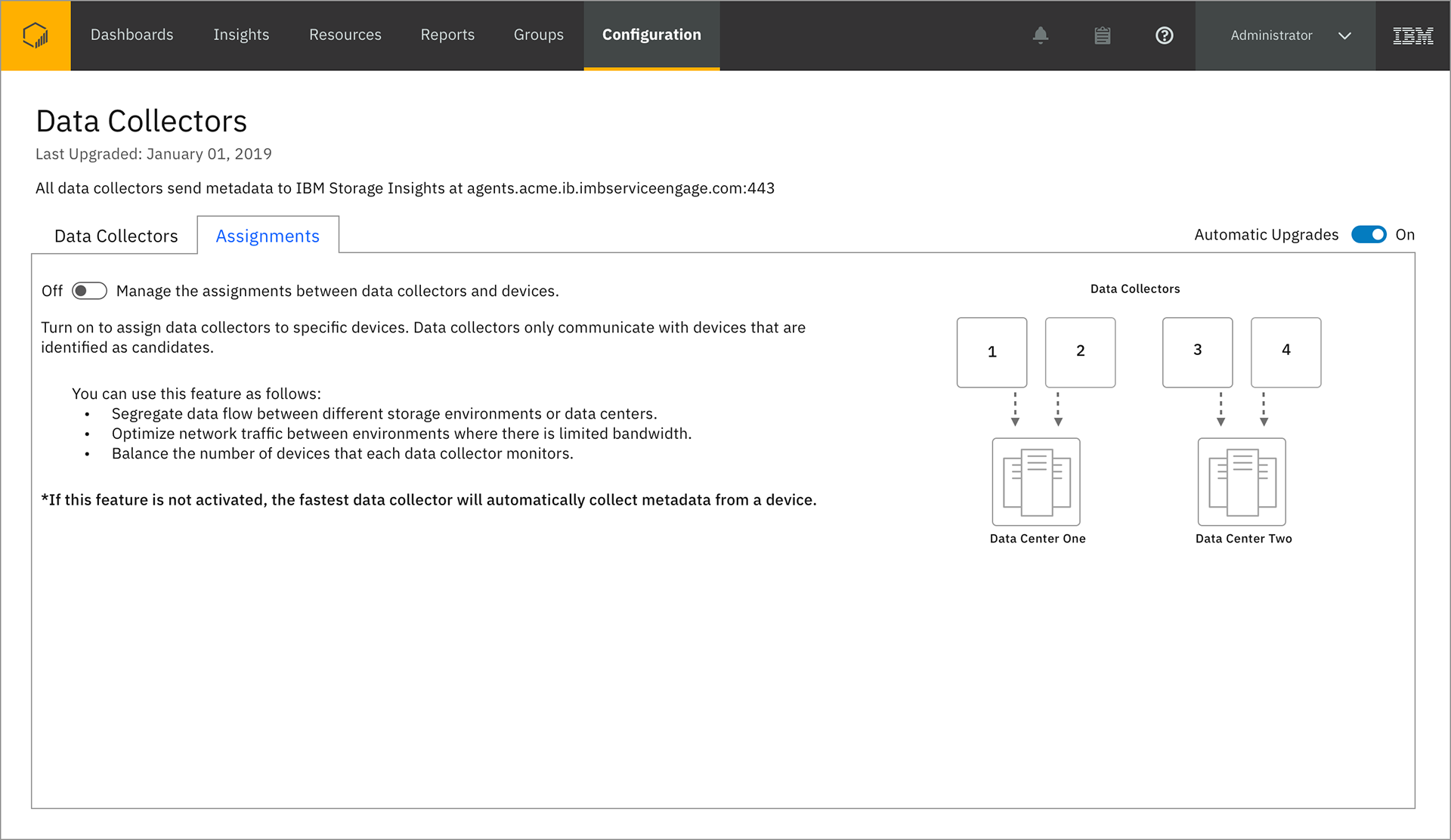
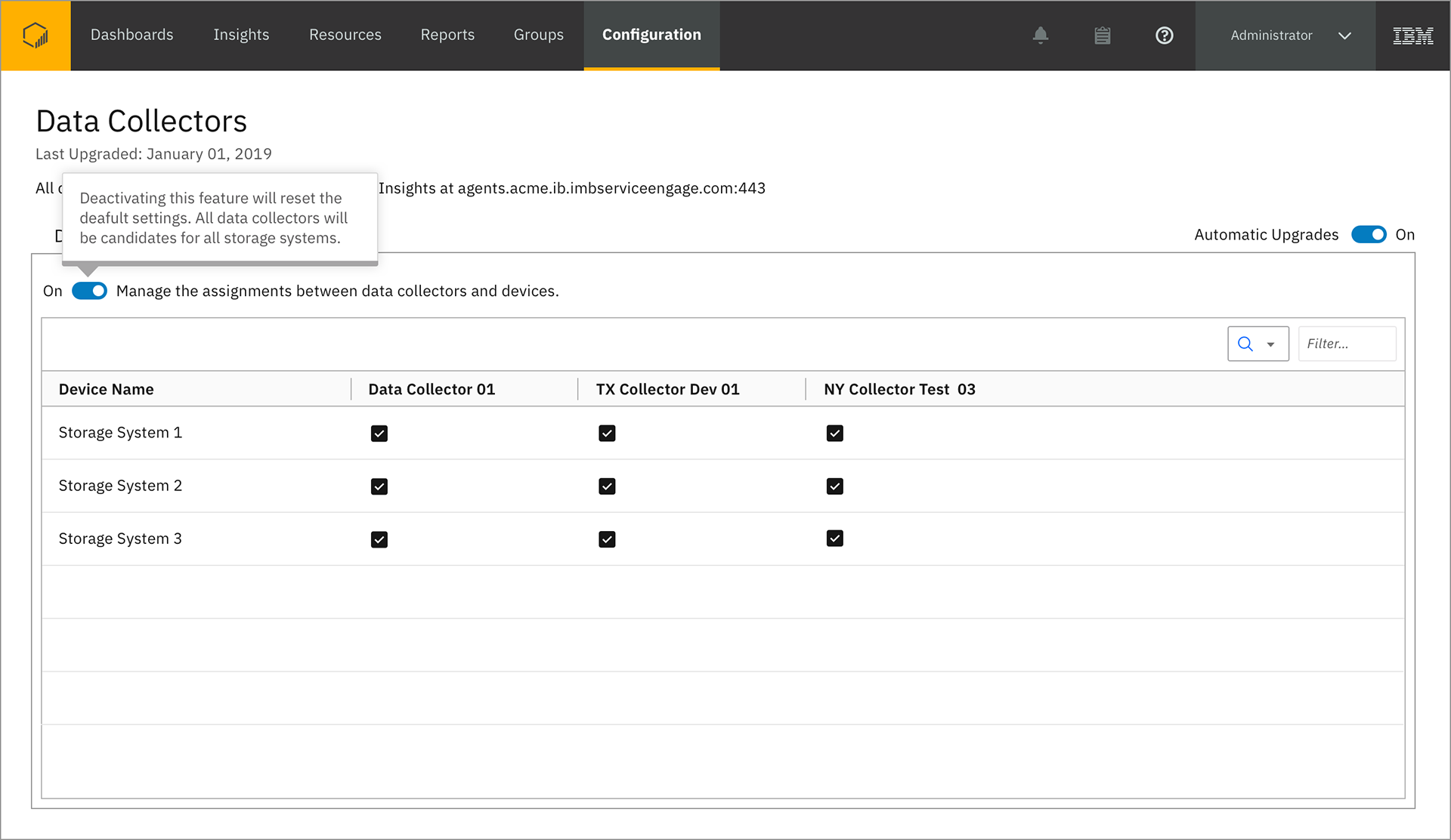
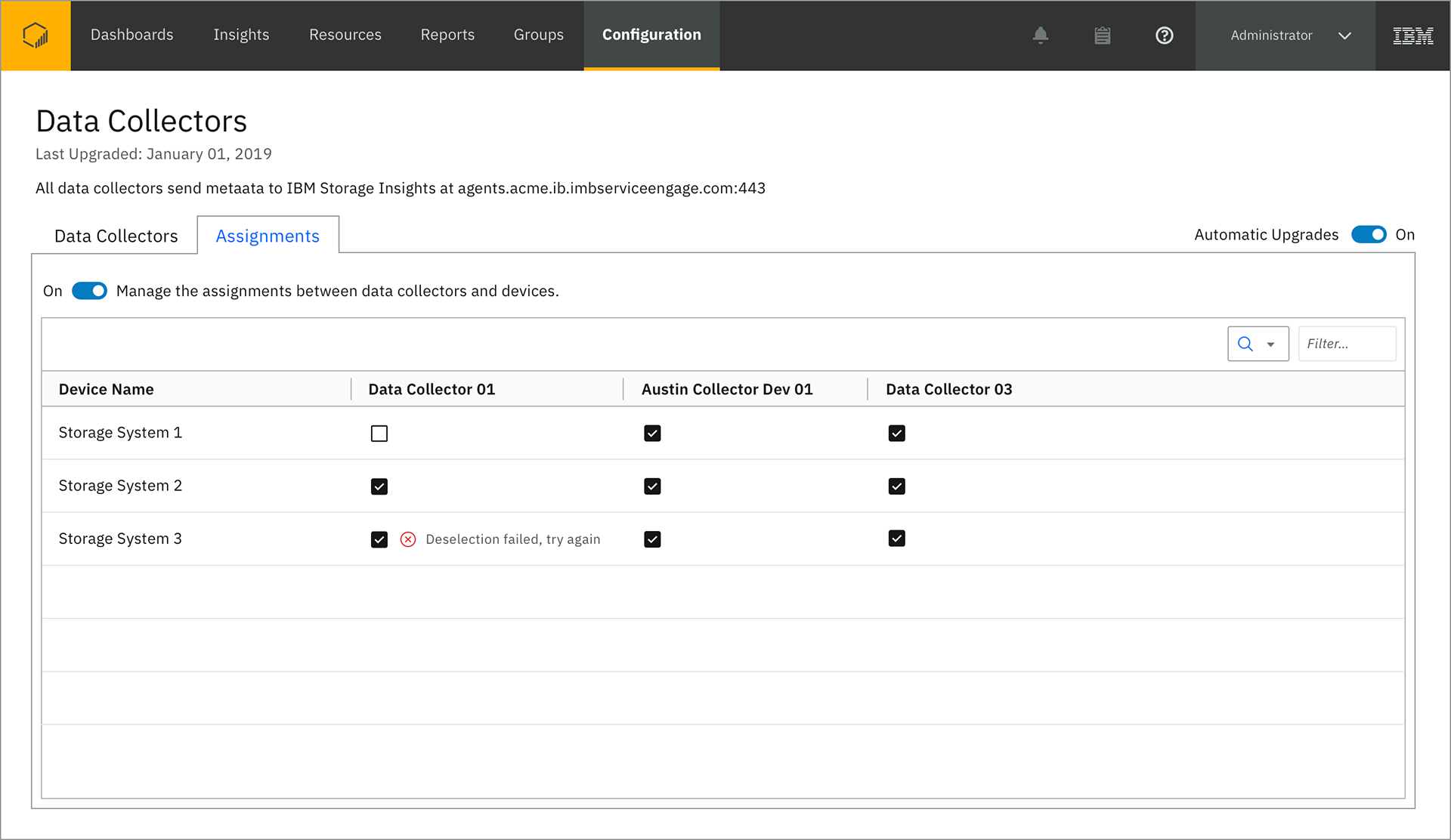
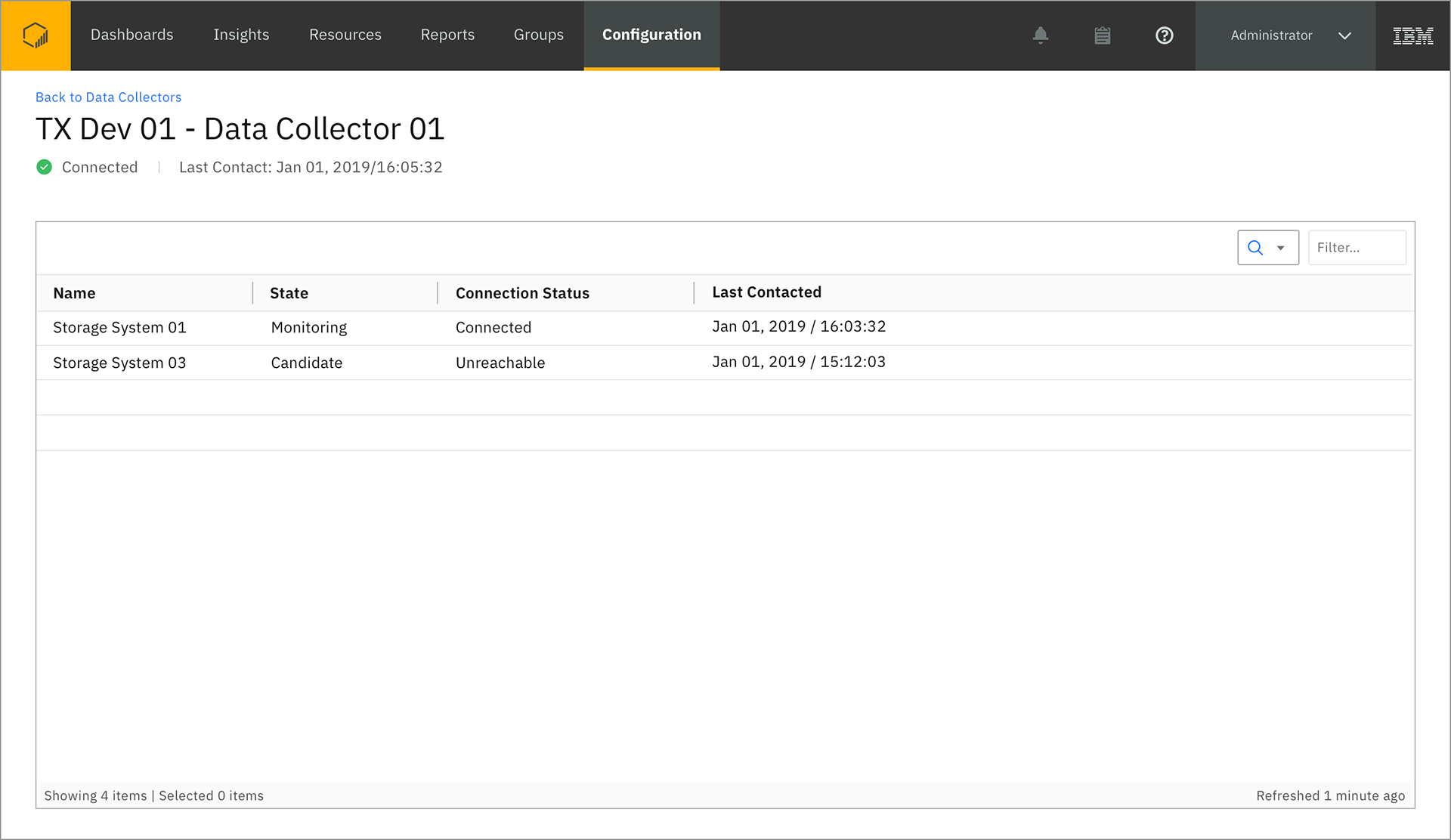
Outcomes and lessons
Collaboration with the design team and other stakeholders was crucial to understand the problem, and to learn about the product in general.
The experience was well received by the users. Some even reached out to share their excitement after using the new data collector page.
The experience was well received by the users. Some even reached out to share their excitement after using the new data collector page.
It takes a long time to update design documentation in InDesign. The team has continued exploring more efficient ways to document.
Customer quotes
"Oh, and that feature to pick which agents probes which devices based on locality, super awesome! I've had a few requests for it, many orgs have labs segregated. And, you folks made it so easy to choose in the UI."
"One of my clients currently has many clusters — the affinity feature is a godsend"
"One of my clients currently has many clusters — the affinity feature is a godsend"